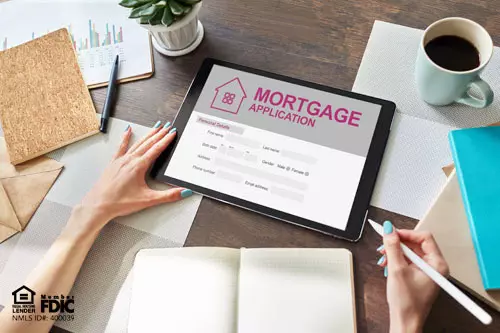The excitement of buying a new home can sometimes be overshadowed by the paperwork and difficulties in getting a mortgage to pay for it. However, understanding the mortgage process can help you to get one without undue stress. Here is a step-by-step method you can use to prepare yourself for home loan approval:
Step 1: Start Saving
The required size of your down payment will depend on the loan type you choose and your lender. It could be up to 20% of the property’s purchase price unless you plan to pay for private mortgage insurance. In most cases, you must also have between 2%-5% of the purchase price to pay for closing costs.
Paying for the house may not be your only financial commitment, so covering the down payment and closing costs ideally won’t empty your savings. Keeping a safety net for unexpected expenses is wise. Continue to save money each month, and consider automatic transfers from your income to your savings account to help you reach your goal.
Step 2: Review Your Credit Score
Your credit score is your indicator of financial health, and the better it is, the better deal you will get on a home loan. If you have a credit card, many issuers allow you to check your credit score on your account for free. It’s even better to get a copy of your full credit report. Credit bureaus such as Equifax, Experian, and TransUnion can send you a copy; request one viawww.annualcreditreport.com.
Check your report thoroughly; if there are mistakes, contact the credit bureau immediately to have them rectified. Work on paying off any revolving balances on existing loans or credit cards, and try to keep your credit card usage below 20% of your available credit. This will help improve your credit score, which, over time, will make you more attractive to mortgage lenders. You should also avoid applying for credit cards or other loans when you’re applying for a mortgage.
Step 3: Prepare Your Financial Documents
When applying for a home loan, there are several documents that your lender will need to process your loan, including but not limited to your pay stubs (at least the last two), recent W-2, tax return documents from the previous two years, and your current bank statement. If you have other sources of income, you will also need documentation supporting them.
Also, your driver’s license or other ID and Social Security number will be required. Any current debt, such as a car or student loan or debt you have paid off, should also be detailed. Other documents might also be required, depending on your lender and the type of mortgage loan.
Step 4: Set Your Budget
As you start your search, you must have a fair estimate of how much you can afford to spend on a home. This calculation will include down payment, loan terms, interest rate, private mortgage insurance fees, and property taxes.
Plenty of mortgage calculators are available online to help you get a realistic estimate, but a good general rule of thumb is that a home should cost you no more than 2.5 times your annual income.
Step 5: Get Pre-approved for a Mortgage Loan
Getting pre-approved shows the seller that you are a serious bidder and likely to be approved for a mortgage. This means they will be more willing to accept your offer, which might give you the edge if there are multiple bids for the home. Getting pre-approved also benefits you, as your lender will clearly show how much you can borrow.
Step 6: Choose a Mortgage Loan Type
You may be eligible for several different types of loans. A conventional loan from a bank, credit union, or online lender usually has higher credit and more significant down payment requirements. Many lenders also offer mortgage loans that are part of lending programs within government agencies, such as the Federal Housing Administration. So if you don’t have the best credit score or a large enough down payment, this type of mortgage may be your best route. Some states may also have assistance programs to help you get a home loan.
Other options to consider include the term of the mortgage. The mortgage term will affect your monthly payment amount and how much interest you’ll pay over the life of the loan. There are also fixed-rate mortgages, which maintain the same interest rate over the life of the loan, and adjustable-rate mortgages that can adjust based on economic factors.
Step 7: Choose Your Lender and Apply
Once you’ve decided on the mortgage loan that’s right for you, it’s time to pick a lender and submit your application. You might have already done this to become pre-approved, which makes this step much easier. In general, it’s best to compare multiple lenders on their rates, fees, and down payment requirements to ensure you’re getting the best deal. Submit your application and documentation to your chosen lender, and wait! In most cases, As soon as you’re approved, you’re ready to close on your new home!
Here's a calculator to help you determine which loan is best for you. Do you still have questions or want to talk to a mortgage expert? We have advisors at NASB who are available to help you. Reach us at 888-661-1982 or click here for more help.




